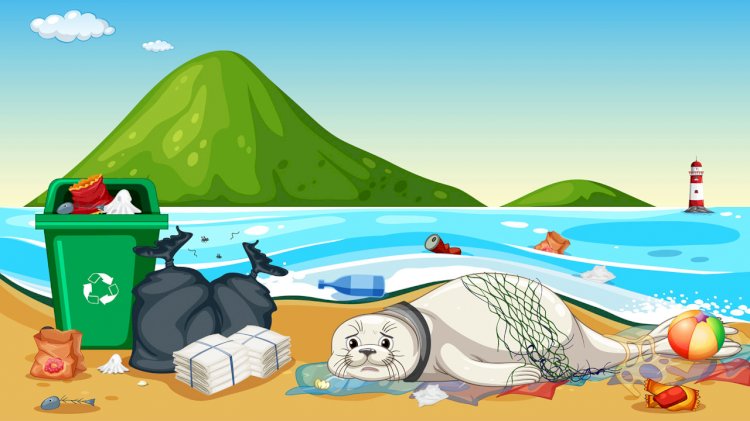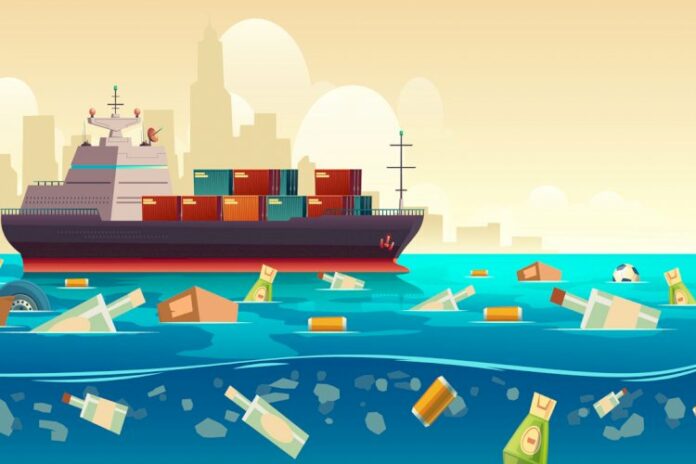Ambitious global efforts to reduce plastic pollution are not enough to overcome the predicted increase in plastic production: a fundamental restructuring of the global plastic economy is needed.
Plastic pollution inputs into rivers, lakes and the ocean could increase to as much as 53 million metric tons annually by 2030 even if current reduction commitments made by governments and the private sector are met, according to a new study published by the international journal Science. This is approximately equivalent to one cargo ships’ worth of plastics, by weight, entering aquatic ecosystems every single day.
The SESYNC (National Socio-Environmental Synthesis Center) working group comprised of scientists from the University of Toronto, University of Georgia, Ocean Conservancy and nearly 20 other international institutions modelled several future scenarios to estimate annual plastic emissions out to the year 2030. The working group compared “business as usual” with current commitments and an ambitious target of less than 8 million metric tons of plastic entering aquatic ecosystems yearly. Using a mechanistic process flow model, researchers were able to calculate that 24 to 35 million metric tons of plastics entered aquatic ecosystems in 2020 alone.
Dr. Chelsea Rochman, Assistant Professor at the University of Toronto, science advisor to Ocean Conservancy and senior author on the study, said:
“Even if we achieve our most ambitious plastics reduction and recycling targets, the amount of plastic waste entering aquatic ecosystems could double by 2030. If we fail and continue along a ‘business as usual’ path, it could quadruple. The study lays bare that current commitments are not enough to stem the tide of plastic entering our aquatic ecosystems – we need to be doing much more, and we don’t have a moment to lose.”
Truly extraordinary efforts are needed to reach a target of 8 million metric tons, a number the world deemed unacceptable when Dr. Jenna Jambeck and colleagues published the first quantitative estimate of plastics entering the ocean in 2015. These latest findings show that to reach that goal, plastic production and waste would need to be reduced by 25-40%; all countries would need to properly manage 60 – 99% of all their waste; and society would need to recover 40% of the remaining plastics that do enter the environment – a rate equivalent to roughly one billion people participating in Ocean Conservancy’s International Coastal Cleanup each year.

Nick Mallos, Senior Director of Ocean Conservancy’s Trash Free Seas® program and a co-author of the paper, said:
“These numbers underscore the need for a sea change in our relationship with plastics. The needed level of ambition should be a wakeup call for governments, industry and civil society around the world to rethink the global plastics economy.”
George Leonard, Chief Scientist at Ocean Conservancy and a co-author of the paper, added:
“There is no single solution that will protect the ocean from plastic pollution. We are at an all-hands-on-deck moment: we need to rapidly reduce plastic production, massively improve waste management, clean up what does enter the environment, and build the political will to hold plastic producers responsible for their products.”
The findings of this study are consistent with other analyses done by Ocean Conservancy, including the organization’s 2019 Plastics Policy Playbook, which showed that a broad range of solutions are needed to tackle this mounting environmental threat. Another paper published by a separate research team in the same issue of Science echoed the need for a more ambitious, multipronged strategy to stem the tide of accelerating plastic waste.
Source: Ocean Conservancy



